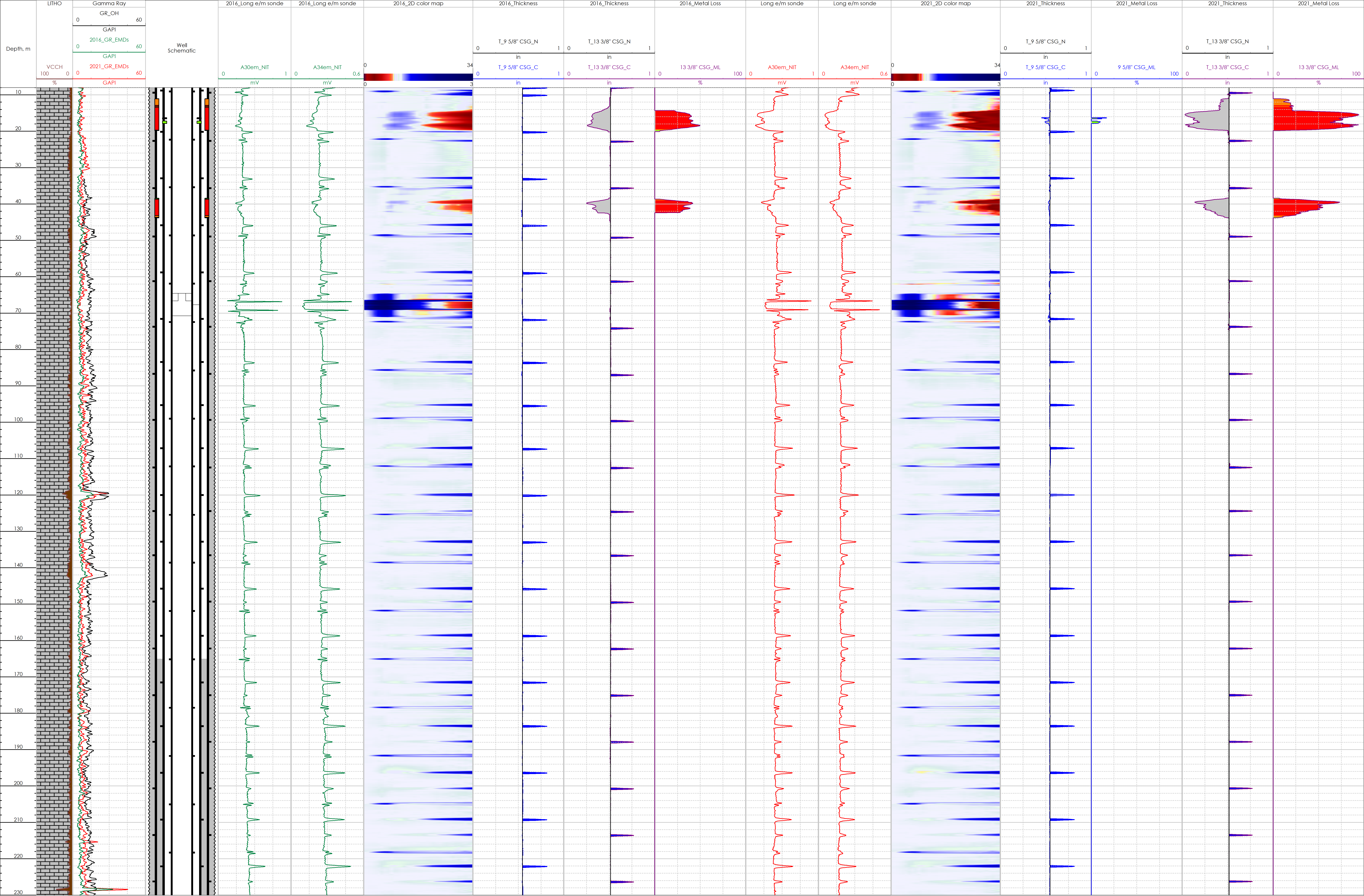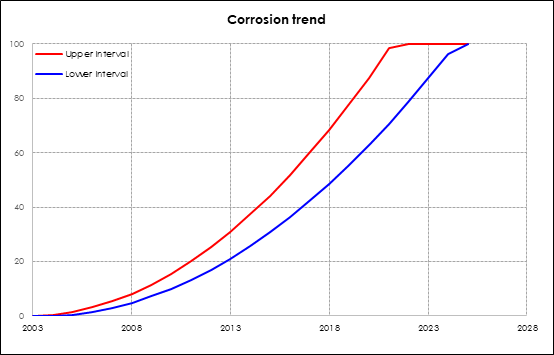Integrity Challenge
It is important to have a good cement bond in the annulus across corrosive intervals. External coating on the pipe will lessen the risk of corrosion. However, if the cement quality is poor and early corrosion is identified then it is essential to increase the frequency of corrosion logging to determine the integrity of the pipe and predict the rate of corrosion. This will allow remedial action to be planned in a timely manner to avoid catastrophic failure. This will also provide data to predict corrosion rates for similar wells.
Corrosion Logging Result
One example when corrosion monitoring was done in a well is shown below:
The well is a vertical gas producer drilled in 2003. The well was completed with a 13 3/8” surface casing, a 9 5/8” intermediate casing and 5.5” cemented completion string with a tubing retrievable sub surface safety valve (TRSSSV) at 67 m.
In 2012 a subsurface integrity test (SIT) was conducted. The B annulus leak-off test (LOT) failed whereas the A annulus test was good.
In 2015 the SIT was repeated with the same results.
In 2016 EMDs logging was conducted. It indicated 2 intervals of severe corrosion in the 13 3/8” casing in the shallow section of the well. The maximum metal loss in both intervals was approximately 40%.
In 2021 the corrosion logging was repeated. The data indicated that metal loss across the upper corroded zone in the 13 3/8” casing had increased to almost 100%. The metal loss in the lower interval had increased to 75%.
In addition, metal loss had migrated to the 9 5/8” casing at a depth of 16 m and metal loss was in the range of 13-14%.
Based on the calculated metal loss of the 2 logging surveys, the corrosion trend for each interval was plotted as shown below. It can be seen that the corrosion rate was more aggressive in the upper interval.
Taking into consideration the result of the 2012 SIT when the B annulus LOT failed, the estimated lifetime of the casing is approximately 8-9 years. According to the trend below, metal loss in 2012 across the upper interval was in range of 30% which may have caused a through wall defect resulting in the B annulus failing the LOT.
The very high annual rate of corrosion predicts that the metal loss will reach 100% in approximately 4-5 years. The corrosion rate across the upper interval is stabilizing at a few percent per year and will reach 100% in the next 10-15 years. Metal loss across the lower interval shows an increased rate of corrosion where metal loss will reach 100% in approximately 7 years. With more aggressive corrosion in the middle and lower intervals this can lead to a potential of corrosion migrating to the inner pipe. In this particular case the client planned to run a scab liner to mitigate any potential leaks to surface.
Conclusion and Recommendation
The EMDs tool can accurately pin point areas of corrosion and metal loss. Time lapse corrosion monitoring is essential to establish corrosion rate trends to predict estimated time of failure for the well which was logged and for similar well designs. Providing this data to the client allows planning for an intervention prior to a catastrophic failure.
All case studies
Looking for more information?
Get in touch with us and our representative will get back to you
Contact Us




